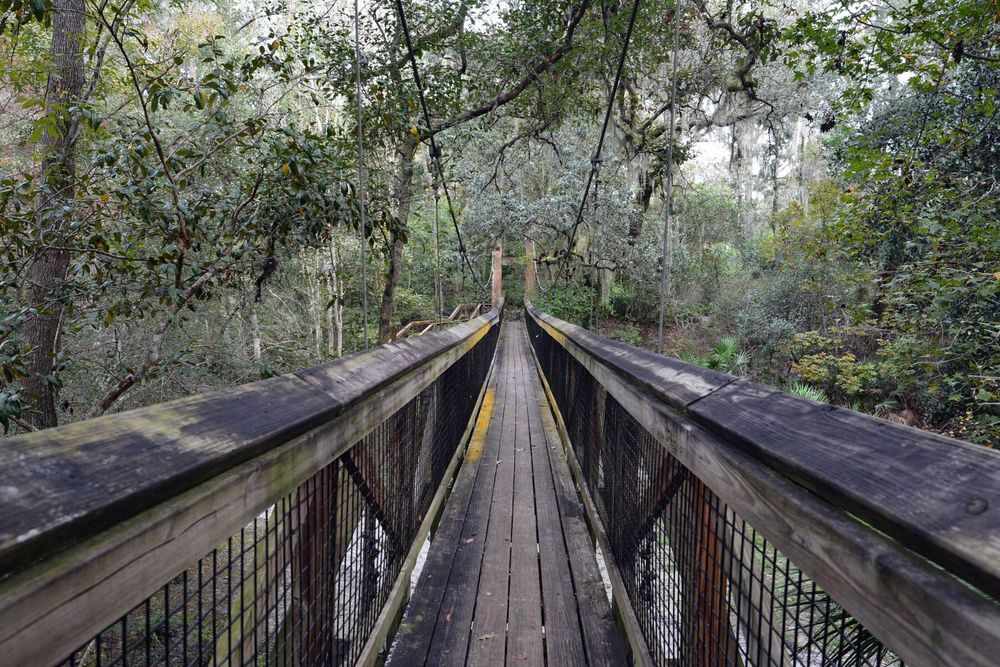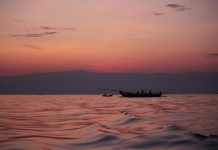One of Florida’s five most popular state parks, Sebastian Inlet is visited by more than one-half million people every year. Located on the state’s east coast, 15 miles south of Melbourne Beach, the park is best known for its premier saltwater fishing and surfing. With a host of other recreational activities, picnicking, swimming, boating, snorkeling, scuba diving, camping, bird and nature watching, hiking, and bicycling – as well as two museums – Sebastian Inlet State Park has something for everybody.
Sebastian Inlet State Park is such a popular place that it is the only state park that is open 24 hours a day, 365 days a year. Although the site was originally a single barrier island, it is now divided by a man-made inlet, connecting the Atlantic Ocean on its east side with Indian River Lagoon to its west.
In 1886, the first inlet (Gibson’s cut) was dug by hand approximately 3 miles south of the present day inlet, at a spot where the ocean frequently washed over the dunes. This inlet was quickly closed by a storm and the shifting sands.
The next attempt to open an inlet was organized by fishermen wanting quick access to the ocean. In 1924, Sebastian Inlet was opened near its current location and small jetties were built to help stabilize the inlet. Over the next two decades, it was closed several times by sands washed or blown in by storms.
For reasons of national security, it was left closed during World War II, then permanently blasted open in 1947. In 1965, the two islands were reconnected when a 1548-foot bridge was built over the inlet.
The history of the Sebastian Inlet area goes back to the end of the last ice age. The barrier islands formed as sandbars off the Florida coast. As vegetation took hold on the sandbars, animals moved in, followed by the first human inhabitants, the Paleo hunters. The Ais Indians were more recent inhabitants of the barrier islands. A tribe of hunters and gatherers, by 1760 the Ais Indians were gone. Like the other natives of Florida, they succumbed to European colonization and diseases.
Today, Sebastian Inlet and the surrounding waters provide fantastic fishing for beach, inlet, and river anglers. Large catches are often made from the two jetties extending into the Atlantic Ocean. Boat launch facilities provide access to nearby offshore fishing and diving.
Popular fish include snook, pompano, snapper, and grouper. During the late autumn months, flounder is a big attraction. Other catches include blue fish, sheepshead, and mackerel as well as crabs, clams, shrimp, and lobster.
Located just south of the boundary dividing subtropical and temperate forests, the park hosts a variety of coastal and aquatic habitats with an incredible diversity of plant and wildlife species. On land, the Hammock Trail, 1.5-mile loop, winds through a subtropical, hammock, a mixture of tropical and temperate plants dominated by cabbage palms (Florida’s state tree) and live oaks. Another 6-mile hiking trail affords a more extended tour of the park’s wilderness. Underwater, divers and snorkelers can view the wildlife of local seagrass communities.
In June and July – during nesting season, the park gives Sea Turtle Walks along the beach, where visitors can watch sea turtle mothers lay their eggs. In a typical year, the three-mile beach becomes the site of 1,000 or more sea turtle nests.
Sebastian Inlet State Park is part of the Great Florida Birding Trail and is bordered by other wilderness areas favored by birders. The Archie Carr National Wildlife Refuge surrounds the park to the north and south. To the west, lies the Pelican Island National Wildlife Refuge – founded in 1903 by President Theodore Roosevelt as the first wildlife refuge. Although people are not allowed on the island, a ranger narrated boat tour takes visitors close enough to enjoy viewing the many different types of birds including the endangered wood stork and reddish egret.
The Sebastian Fishing Museum
This museum is devoted to educating the public on the rich cultural history of Sebastian’s fishing industry. The life and history of the people who lived in Sebastian is interwoven with fishing and Indian River Lagoon, which provided livelihood, food and transportation. The Sebastian Fishing Museum is dedicated to three Sebastian families that operated fish houses. The museum houses a replica of a house and dock as well as a homemade fishing boat, nets, fishing gear and photos of fishing in the Indian River Lagoon.
McLarty Treasure Museum
In the early morning hours on July 31, 1715, a severe hurricane sank eleven Spanish treasure ships along the east central Florida coast. Seven hundred people lost their lives in this disaster, while over 1,000 people survived. One survivor’s campsite, discovered in the mid-1950s, was located on the present-day site of the McLarty Treasure Museum. Remnants of these ships are still being found from Cape Canaveral southward to St. Lucie Inlet. The museum tells the story of the disaster and displays many of the items that have been found by archeologists and treasure hunters.

























